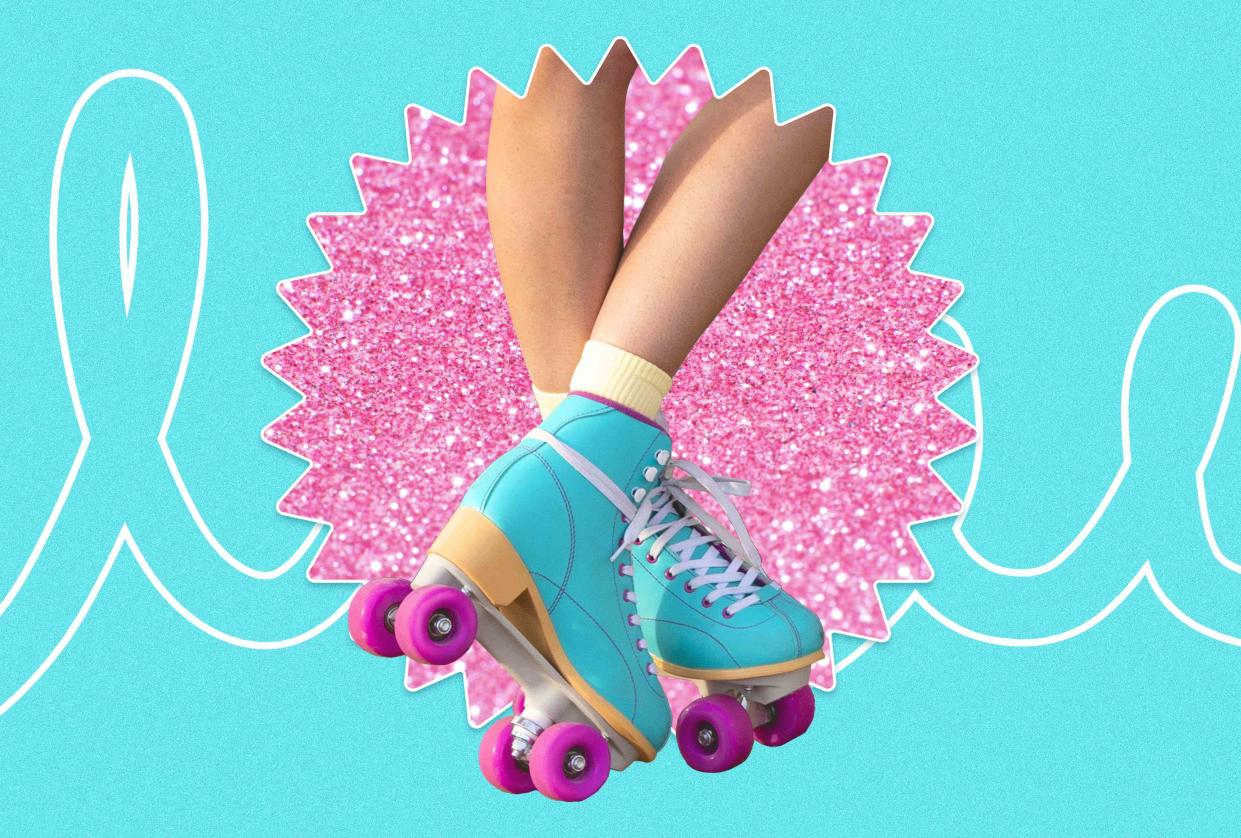Can't Get Enough of Barbie? Try Rollerblading This Summer

Fact checked by Nick Blackmer
Key Takeaways
Rollerblading, also known as inline skating, has been making a comeback over the last few years, and the Barbie movie is only adding to the appeal.
Both rollerblading and roller skating offer a number of health benefits including building muscle strength, increasing endurance, improving cardiovascular fitness, and helping with balance.
While roller skates are slightly easier to use, both come with a risk of falling, so it’s important to wear protective gear including a helmet and wrist, knee, and elbow pads.
If you’ve seen the new Barbie movie, then you know Ken goes nowhere without his skates. Margot Robbie, the actor who plays Barbie, said that she also loves the sport—both in the film and in real life.
Rollerblading, also known as inline skating, was all the rage in the ’90s and it’s been making a comeback in the United States for a while now. As it turns out, rollerblading can actually be a really good form of exercise.
Inline skating is a great low-impact exercise that can help reduce the risk of diabetes, obesity, heart disease, and stroke, as well as increase blood circulation throughout the body and brain, according to Florence Comite, MD, a physician and avid rollerblader who founded the Comite Center for Precision Medicine & Health.
“I love the sport—it feels like I’m flying low and fast on my rollerblades,” Comite told Verywell.
If you want to get into rollerblading like Barbie, here are some basics you should know.
Related: The End of the 12-3-30 Era? Introducing the Taylor Swift Strut Workout
Rollerblading vs. Roller Skating
You might hear both rollerblading and roller skating. The main difference between the two is the configuration of the wheels, Comite said. Rollerblades’ wheels are set up in a straight line, while roller skates have two sets of side-by-side wheels in the front and back.
Roller skate wheels create a wider base, so they’re more stable than rollerblades and safer for beginners. Rollerblades, however, tend to have higher, more supportive boots, which can help protect ankles better from strains and sprains.
“As a young girl, I started with roller skates, then moved to inline skating, which was a bit more challenging and definitely more fun,” Comite said.
If you’re nervous about getting straight into rollerblades, you could always try roller skates first, said John Gallucci Jr., ATC, PT, DPT, a sports medicine expert and the CEO of JAG-ONE Physical Therapy.
“Roller skating tends to be easier for people with muscles that are less developed because it requires you to stand upright and move in a slower motion,” Gallucci told Verywell. “Since rollerblades have wheels in a line and allow you to move faster, this might be a more dangerous option for beginners because it is far easier to lose your balance.”
Related: If Walking Is the Only Exercise You Do, Is That Enough to Stay Healthy?
The Health Benefits of Rollerblading
Both rollerblading and roller skating have multiple health benefits, Gallucci said. They’re good cardio exercises that can help burn calories.
“Rollerblading and roller skating use one’s bodyweight to help build strength in the muscles, increase endurance, and overall help with balance,” he said. “In fact, balance training can help reduce the risk of injuries to ankles, knees, hips and many other parts of the body.”
These activities are also great for people of all ages and health histories because they’re gentler on the knee joints than running since downward force is not applied, Gallucci added.
According to Comite, both types of skating generally use the same lower-body muscles: the glutes, quadriceps, hamstrings, and calf muscles. But the side-to-side striding motion of inline skating also recruits the inner and outer thigh muscles into play. Both types of skating require using your arms and balancing, which involves your core muscles to stabilize your spine, she added.
“Skating calls all the muscles, ligaments, and tendons supporting the knee into play, so it will improve overall leg strength and tone,” Comite said. “Because skating is an exercise that requires balancing, it improves proprioception, the brain’s ability to know where the body is in space without seeing where your body parts happen to be. Over time, skating helps to regain a sense of balance, an essential contributor to healthy longevity.”
Related: Walking Just 4,000 Steps a Day May Lower Dementia Risk
Is Rollerblading Safe Enough for You?
As with any activity that requires balance, falling is always a possibility with skating. That’s why it’s critical to wear a helmet as well as wrist, knee, and elbow pads to stay relatively protected and safe, especially when you’re just starting out. And don’t forget to watch where you’re going.
“My first rollerblading experience ended by intentionally falling because I failed to plan around a relatively big hill near my home,” Comite said. “I realized I had no way to stop without running into a major road. Luckily, I was wearing leggings, jeans, and protective gear so the road burn was minimal. Taught me a lesson, though, after that, to anticipate the path as I went forward with even more exciting rollerblading feats.”
Rollerblading or skating might not be the best option for those at a greater risk of bone fracture due to osteopenia (bone thinning), Comite said.
If you have a vestibular condition that affects your balance, you might also want to refrain from skating, according to Gallucci. But for anyone else interested in trying a new, low-impact, fun form of exercise, rollerblading (or skating) just might be for you.
What This Means For You
If you’re looking for a low-impact, outdoor workout that’s as fun as it is good for you, you may want to give rollerblading or skating a shot. Just don’t forget your helmet and protective pads!

